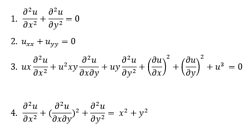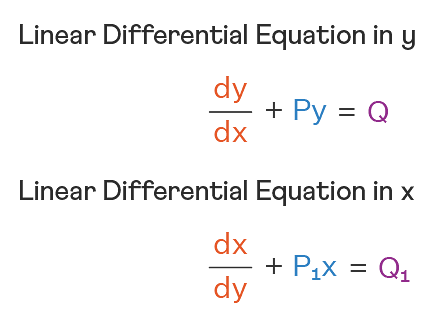A parallel beam of light is allowed to fall on a transparent spherical globe of diameter 30 cm and refractive index 1.5. The distance from the centre of the globe at which the beam of light can converge is________ mm.
Correct Answer: 225
Solution and Explanation
The correct answer is: 225

1st refraction:
\(\frac{1.5}{V_1}-0=\frac{0.5}{15}\)
\(⇒ v_1 = 45 \)cm
2nd refraction:
\(\frac{1}{v_2}-\frac{1.5}{15}=\frac{-0.5}{-15}\)
\(⇒ \frac{1}{v_2}=\frac{1}{30}+\frac{1}{10}\)
\(⇒ v2 = +7.5 \)cm
\(⇒\) Distance from centre = 22.5 cm
Top Questions on Units and measurement
- A person measures mass of 3 different particles as 435.42 g, 226.3 g and 0.125 g. According to the rules for arithmetic operations with significant figures, the additions of the masses of 3 particles will be.
- JEE Main - 2025
- Physics
- Units and measurement
- A tiny metallic rectangular sheet has length and breadth of 5 mm and 2.5 mm, respectively. Using a specially designed screw gauge which has pitch of 0.75 mm and 15 divisions in the circular scale, you are asked to find the area of the sheet. In this measurement, the maximum fractional error will be \( \frac{x}{100} \), where \( x \) is:
- JEE Main - 2025
- Physics
- Units and measurement
The ratio of the power of a light source \( S_1 \) to that of the light source \( S_2 \) is 2. \( S_1 \) is emitting \( 2 \times 10^{15} \) photons per second at 600 nm. If the wavelength of the source \( S_2 \) is 300 nm, then the number of photons per second emitted by \( S_2 \) is ________________ \( \times 10^{14} \).
- JEE Main - 2025
- Physics
- Units and measurement
- Given below are two statements: Statement I : In a vernier callipers, one vernier scale division is always smaller than one main scale division. Statement II : The vernier constant is given by one main scale division multiplied by the number of vernier scale divisions. In light of the above statements, choose the correct answer from the options given below.
- JEE Main - 2025
- Physics
- Units and measurement
- If the length of a rod is measured as 830600 mm, then the number of significant figures in the measurement is
- TS EAMCET - 2025
- Physics
- Units and measurement
Questions Asked in JEE Main exam
- Evaluate the following limit: \[ \lim_{x \to \infty} \frac{(2x^2 - 3x + 5) \left( 3x - 1 \right)^{x/2}}{(3x^2 + 5x + 4) \sqrt{(3x + 2)^x}}. \] The value of the limit is:
- JEE Main - 2025
- Limits and Exponential Functions
- The number of ways, 5 boys and 4 girls can sit in a row so that either all the boys sit together or no two boys sit together is:
- JEE Main - 2025
- Permutation and Combination
- If \[ I = \int_0^{\frac{\pi}{2}} \frac{\sin^2 \frac{3}{2}x}{\sin^2 x + \cos^2 x} \, dx, \] then \[ \int_0^{\frac{\pi}{2}} \frac{x \sin x \cos x}{\sin^4 x + \cos^4 x} \, dx \] equals:
- JEE Main - 2025
- Integration and Trigonometry
- Which compound would give 3-methyl-6-oxoheptanal upon ozonolysis ?
- JEE Main - 2025
- Organic Chemistry
- If the square of the shortest distance between the lines \[ \frac{x-2}{1} = \frac{y-1}{2} = \frac{z+3}{-3} \] and \[ \frac{x+1}{2} = \frac{y+3}{4} = \frac{z+5}{-5} \] is \( \frac{m}{n} \), where \( m \) and \( n \) are co-prime numbers, then \( m+n \) is equal to:
- JEE Main - 2025
- Shortest Distance Between Skew Lines
Concepts Used:
Types of Differential Equations
There are various types of Differential Equation, such as:
Ordinary Differential Equations:
Ordinary Differential Equations is an equation that indicates the relation of having one independent variable x, and one dependent variable y, along with some of its other derivatives.
\(F(\frac{dy}{dt},y,t) = 0\)
Partial Differential Equations:
A partial differential equation is a type, in which the equation carries many unknown variables with their partial derivatives.

Linear Differential Equations:
It is the linear polynomial equation in which derivatives of different variables exist. Linear Partial Differential Equation derivatives are partial and function is dependent on the variable.

Homogeneous Differential Equations:
When the degree of f(x,y) and g(x,y) is the same, it is known to be a homogeneous differential equation.
\(\frac{dy}{dx} = \frac{a_1x + b_1y + c_1}{a_2x + b_2y + c_2}\)
Read More: Differential Equations